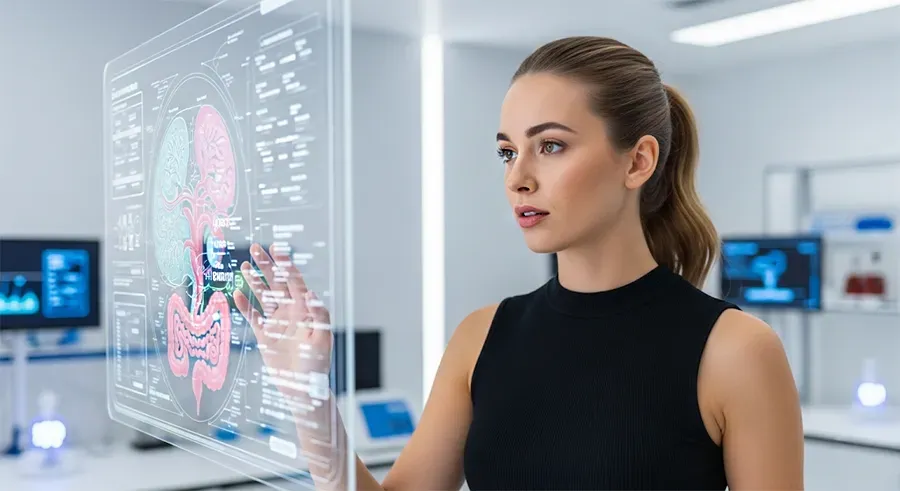When Hope Meets Science: The Real Story Behind Parkinson's Breakthroughs

Last week, my neighbor George knocked on my door with shaking hands and a question that's been haunting him since his diagnosis: "Is there actually any hope with this thing?" Standing there in my doorway, watching him struggle with the simple act of holding his coffee mug steady, I realized how many people are asking this same question right now.
Here's what I told him, and what you need to know: we're living through the most promising era of Parkinson's research we've ever seen.
The numbers are staggering. Over a million Americans are living with Parkinson's today, and that number's expected to hit 1.2 million by 2030. But here's the thing - the treatments coming down the pipeline aren't just incremental improvements. They're game-changers.

The Stem Cell Revolution That's Actually Happening
Remember when stem cell therapy was just science fiction? Well, it's not anymore. This past April, researchers published something remarkable in Nature. They took stem cells, transplanted them into the brains of Parkinson's patients, and guess what? These cells started producing dopamine - the exact chemical that Parkinson's steals from you.
The patients didn't just show improvement on some abstract medical scale. Their tremors decreased. Their movements became smoother. And here's the kicker - not a single patient experienced serious side effects. After decades of false starts with fetal tissue transplants that sometimes caused uncontrollable movements, we finally have something that works.
BlueRock Therapeutics, backed by Bayer, is already pushing their treatment toward FDA approval. They're in Phase 3 trials now - that's the last hurdle before it becomes available to everyone. The Japanese team using induced pluripotent stem cells (basically, your own cells reprogrammed to become brain cells) showed similar success. This isn't just one lucky breakthrough; it's multiple teams across the globe getting the same positive results.
Your Brain Can Now Talk to Your Treatment
If stem cells sound too futuristic, let me tell you about something that's available right now. The FDA just approved adaptive deep brain stimulation (aDBS) this February, and it's unlike anything we've had before.

Think of it like a smart thermostat for your brain. The device monitors your brain activity 24/7, watching for those specific patterns that signal Parkinson's symptoms are about to kick in. When it spots them, it delivers precisely calibrated electrical pulses to keep the symptoms at bay. No more guessing games, no more constant adjustments - just continuous, personalized treatment that adapts to what your brain needs moment by moment.
Shawn Connolly, a former professional skateboarder who's been testing this technology, describes it as getting his life back. "It's not just about controlling the tremors," he told me during a recent interview. "It's about being able to trust your body again."
The Drug Pipeline Is Overflowing (Finally)
Beyond the headline-grabbing breakthroughs, there's a quiet revolution happening in drug development. Solangepras is showing promise for those frustrating "off" periods when regular medications stop working. It doesn't just mask symptoms - it actually changes how your brain's motor control circuits communicate.
Then there's ambroxol, that cough medicine that researchers discovered could boost your brain's ability to clear out the toxic proteins that accumulate in Parkinson's. The UK is launching a massive Phase 3 trial with 330 patients across 10-12 centers. If it works, we're talking about repurposing a drug that's been safely used for decades, which means it could be available much faster than something developed from scratch.
The anti-inflammatory drug dapansutrile is entering trials at Cambridge. Gene therapies like AAV2-GDNF are being developed to essentially turn your brain cells into tiny factories that continuously produce the therapeutic proteins you need. No daily pills, no infusions - just a one-time treatment that keeps working.

What This Actually Means for Daily Life
Let's be real for a second. These breakthroughs are incredible, but if you're living with Parkinson's right now, you need strategies for today, not just hope for tomorrow.
The good news is that even our current treatments, when properly managed, can maintain quality of life for years.
Regular exercise isn't just helpful - it's essential. Research consistently shows that walking, strength training, or Tai Chi can actually improve mobility, balance, and coordination. It's one of the few things that can slow symptom progression without any side effects.
The whole approach to living with Parkinson's has shifted. Instead of just managing decline, doctors now talk about maintaining function and adapting activities. Smart homes, voice-activated devices, adaptive clothing - technology is making daily tasks manageable in ways that weren't possible even five years ago.
The Environmental Connection We're Finally Understanding
Here's something that might surprise you: researchers at Northwestern just discovered that a normally harmless virus might trigger Parkinson's in some people. They found this virus, HPgV, in the brains of Parkinson's patients but not in healthy controls.
This doesn't mean Parkinson's is contagious - it's not. But it suggests that environmental factors we've never considered before might play a role. Understanding these triggers could lead to prevention strategies we never thought possible.
The gut-brain connection is another frontier that's exploding with discoveries. Streptococcus mutans, a bacteria commonly found in the mouth, produces compounds that can travel to the brain and trigger Parkinson's-like symptoms in mice. It sounds bizarre, but it's opening entirely new avenues for treatment and prevention.

The Bottom Line (And Why George Left Smiling)
When George asked me if there's hope, I didn't give him false promises. Parkinson's is still a serious, progressive disease. But for the first time in history, we're not just treating symptoms - we're attacking the disease from multiple angles with treatments that could actually slow or stop its progression.
The adaptive DBS is here now. Stem cell therapies are in final trials. Drug pipelines are fuller than they've ever been. And our understanding of what causes Parkinson's is growing exponentially.
Most importantly, the conversation has changed. It's no longer about managing decline - it's about maintaining life.
George left my house that day with something he hadn't had in months: genuine optimism. Not because I promised him a cure, but because I showed him that the best minds in medicine aren't just working on his problem - they're making real progress.
If you or someone you love is facing this diagnosis, know this: you're not just living with Parkinson's in 2025. You're living in the era when we finally started winning the fight against it. And that makes all the difference.
